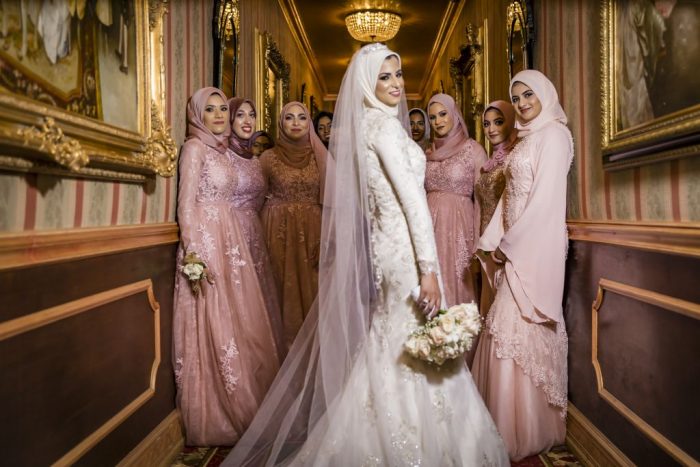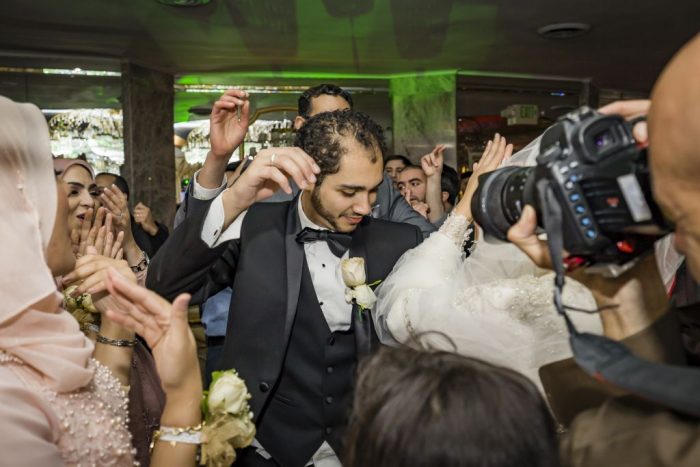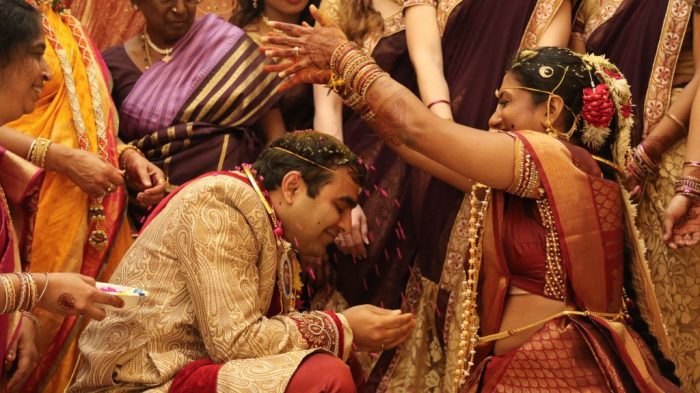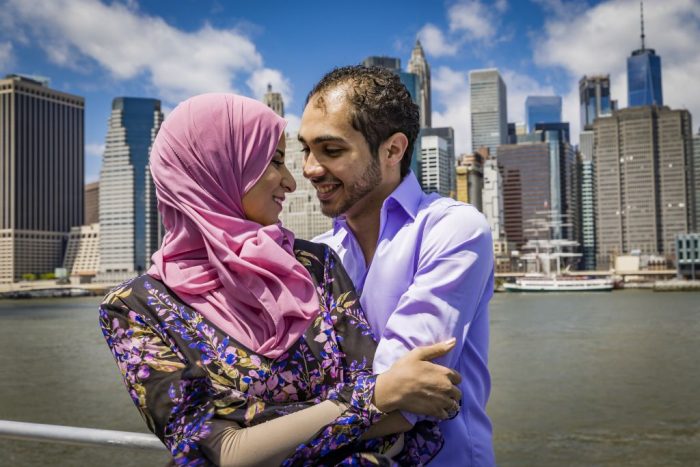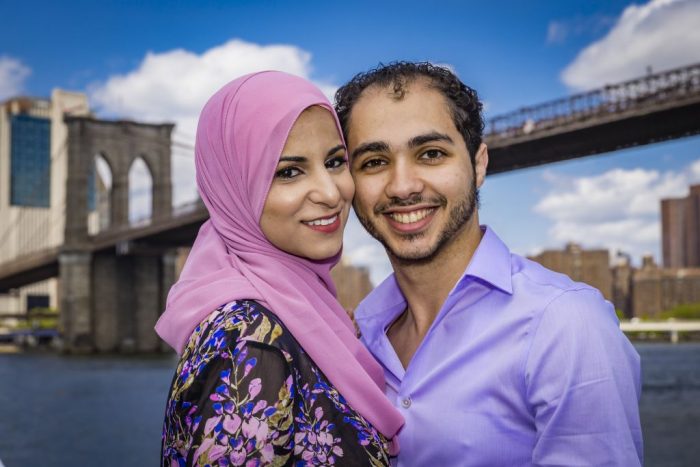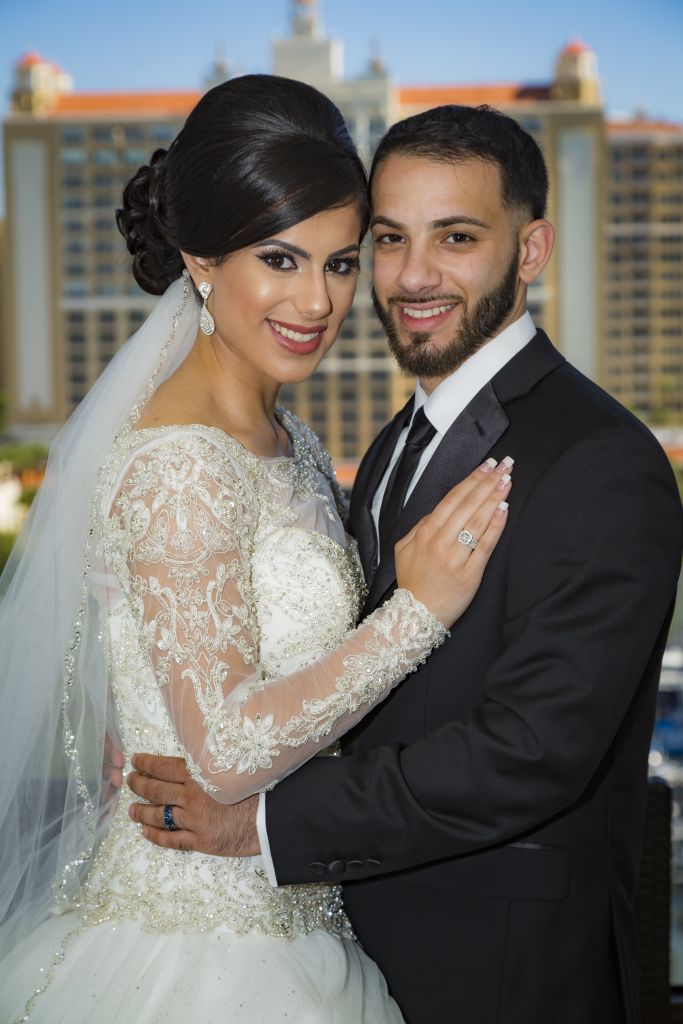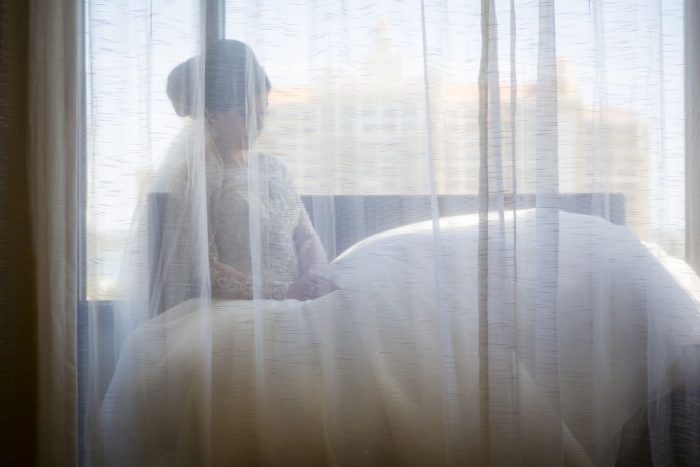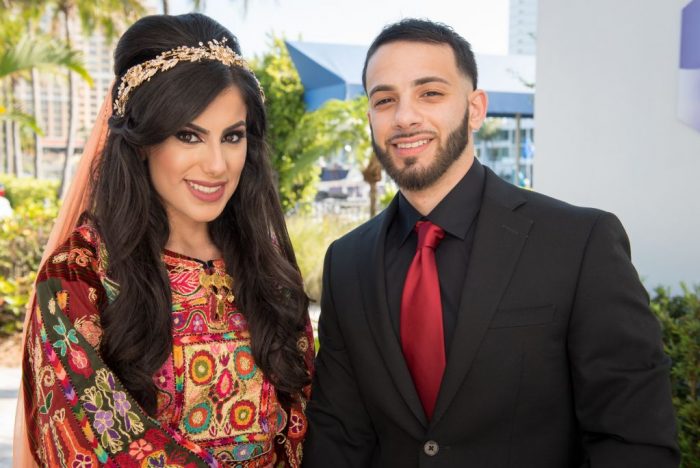Christian, Muslim, and Hindu Ethnic Weddings
 Our Ethnic wedding Videographers in Tampa have shot Eastern Orthodox (Syrian, Rusian, and Greek Orthodox), Asian Weddings (Vietnameese, Chineese, and Japaneese), Middle Eastern Muslim Weddings, Baltic Weddings, and a variety of Indian Weddings (Christian, Muslim, and Hindu Ceremonies)
Our Ethnic wedding Videographers in Tampa have shot Eastern Orthodox (Syrian, Rusian, and Greek Orthodox), Asian Weddings (Vietnameese, Chineese, and Japaneese), Middle Eastern Muslim Weddings, Baltic Weddings, and a variety of Indian Weddings (Christian, Muslim, and Hindu Ceremonies)
 We are very familiar with many ethnic cultures. Many of these ethnic weddings provides challanges that a traditional American wedding photographer or videographer may not be able to adequately deal with, if he is not experienced with your culture. For example with many middle eastern weddings, the dance floor can often be very crowded and it takes a skilled videographer to be able to get in close to get the faces and emotions, yet understand the rythm of the dance floor and have good perceptial awareness so as to be not in the way. The action happens quick and it take 100% concentration of the photographer or videographer to capture the moment when it happens. We enjoy the tempo and energy that most ethnic weddings provide and are very comfortable shooting in Ethnic Weddings. Whether it is Christian, Muslim, or Hindu, are videographers and photographers are familiar with most of the different traditions. You can view our photos on our Ethnic Wedding Photography Gallery.
We are very familiar with many ethnic cultures. Many of these ethnic weddings provides challanges that a traditional American wedding photographer or videographer may not be able to adequately deal with, if he is not experienced with your culture. For example with many middle eastern weddings, the dance floor can often be very crowded and it takes a skilled videographer to be able to get in close to get the faces and emotions, yet understand the rythm of the dance floor and have good perceptial awareness so as to be not in the way. The action happens quick and it take 100% concentration of the photographer or videographer to capture the moment when it happens. We enjoy the tempo and energy that most ethnic weddings provide and are very comfortable shooting in Ethnic Weddings. Whether it is Christian, Muslim, or Hindu, are videographers and photographers are familiar with most of the different traditions. You can view our photos on our Ethnic Wedding Photography Gallery.
Indian Weddings
The first culture we will profile on our Ethnic weddings are Indian Weddings. Our videographers have filmed Hindu, Kerala Christian, and Muslim weddings. On the video above, we used music from three different royalty free websites, as we wanted the perfect blend of Indian Music which featured both a Bollywood Style, and Traditional Indian music. We love Indian weddings because of the rich traditions, the beautiful clothing and jewels.  If you are looking for an Indian Wedding Videographer, it is important to choose one who is experienced with the Indian Traditions, especially when having a Hindu Ceremony. A videographer has to shoot Hindu Ceremonies completely different from a traditional Christian wedding, or else, he will miss the important details. During the Hindu ceremony, the videographer has to be in different positions at different times. I was doing some yoga moves on some a recent hindu ceremony, because of the tight space that a videographer has to work on. It is important to be at eye level, so if a videographer is not willing to be on his knees, or shoot from a low position, it will negatively affect your video. An Indian Wedding Videographer has to be mobile and in good shape. During the Jaimala (Exchange of Garlands), he should be standing to the sides so he can get facial reactions as the bride and groom exchange garlands.
If you are looking for an Indian Wedding Videographer, it is important to choose one who is experienced with the Indian Traditions, especially when having a Hindu Ceremony. A videographer has to shoot Hindu Ceremonies completely different from a traditional Christian wedding, or else, he will miss the important details. During the Hindu ceremony, the videographer has to be in different positions at different times. I was doing some yoga moves on some a recent hindu ceremony, because of the tight space that a videographer has to work on. It is important to be at eye level, so if a videographer is not willing to be on his knees, or shoot from a low position, it will negatively affect your video. An Indian Wedding Videographer has to be mobile and in good shape. During the Jaimala (Exchange of Garlands), he should be standing to the sides so he can get facial reactions as the bride and groom exchange garlands.
 During the Havan (Lighting of Sacred Fire) it is good if the videographer can be very low to shoot at a level that really captures the fire and fruit, etc. During the Mangalphera (walk around the fire) and the Saptapardi (Seven Steps together), you really need at least 2 cameras (3 is even better), because you want the wide shot of walking around the fire, but it’s also good to get the close up of the feet. Towards the end of the ceremony during the Fishing for Rings, again, as a videographer, you want to be at a low-level to see the bride and groom as they try to race each other to find the ring. Tradition says that the first to find the rings will be the “king of the household”. If a videographer is not experience with Indian weddings, he or she will not know the important events such as these to focus on.
During the Havan (Lighting of Sacred Fire) it is good if the videographer can be very low to shoot at a level that really captures the fire and fruit, etc. During the Mangalphera (walk around the fire) and the Saptapardi (Seven Steps together), you really need at least 2 cameras (3 is even better), because you want the wide shot of walking around the fire, but it’s also good to get the close up of the feet. Towards the end of the ceremony during the Fishing for Rings, again, as a videographer, you want to be at a low-level to see the bride and groom as they try to race each other to find the ring. Tradition says that the first to find the rings will be the “king of the household”. If a videographer is not experience with Indian weddings, he or she will not know the important events such as these to focus on.
Another type of wedding that our Indian Wedding videographers enjoy is the Kerala Christian Ceremonies. It is named after, Kerala (keer-a-la) a region in southern India where Christianity originated in 52ad. This wedding included several Indian Traditions. The Crowning, where the priest takes a gold chain with a cross as its pendant and hovers it around the couple’s heads in the form of a crown. This is repeated three times and the couple is crowned King and Queen of their new life together. The Minnukettu (Tying the knot): This is a Hindu custom that Syrian Christians of Kerala practice. A ‘minnu’ is a small leaf-shaped pendant made of gold, with 7 tiny beads placed together on the leaf to form a cross (+), symbolizing the holy cross. A minnu is tied around the bride’s neck by the groom on the day of their marriage (right). The knot tied is called the reef knot, which is almost impossible to unknot. This symbolizes the permanence of the marriage.
After seven days of marriage, the minnu is put on a gold chain and is expected to be worn till death. A Minnu is an indication of a married woman. Manthrakodi or the wedding sari is a gift to the bride from the groom and his family symbolizing him as her provider. Covering the brides head with Manthrakodi is another common tradition in Kerala Christian weddings. It symbolizes the groom’s promise of being a protector of his bride for the rest of her life. See more pictures on our Ethnic Weddings Pinterest Page.
Greek Orthodox Weddings
Our ethnic photographers are experienced Greek Orthodox Weddings. This wedding below at the historic St Nicholas Greek Orthodox Church in Tarpon Springs. Greek Orthodox Weddings are steeped in ritual and symbolism. As with most cultures, there are Rings, Candles, and Wine, however, on a Greek Wedding they are done in a unique way and really more similar to the weddings of biblical times.
 The EXCHANGING OF RINGS are done early in the ceremony, as the Koumbara (sponsor), exchanges the rings three times, after the priest touches the foreheads of the bride and the groom with the rings.
The EXCHANGING OF RINGS are done early in the ceremony, as the Koumbara (sponsor), exchanges the rings three times, after the priest touches the foreheads of the bride and the groom with the rings.
CANDLES: The bride and groom each hold a candle which remind them of the light of Christ who is both with them in the ceremony and in their future married life together.
 CROWING. Stefana is used for the crowning of the couple. The Crowns are signs of Glory and Honor as the bride and groom are crowned as King and Queen of their homes, which they will rule with wisdom, justice, and integrity.
CROWING. Stefana is used for the crowning of the couple. The Crowns are signs of Glory and Honor as the bride and groom are crowned as King and Queen of their homes, which they will rule with wisdom, justice, and integrity.
COMMON CUP is where the bride and groom share unconsecrated wine symbolizing the sharing of all that life has to offer.Tampa Bay Greek Wedding at St Nicholas Greek Orthodox Church in Tarpon Springs. The Greek Orthodox Wedding is steeped in ritual and symbolism.
 The EXCHANGING OF RINGS are done early in the ceremony, as the Koumbara (sponsor), exchanges the rings three times, after the priest touches the foreheads of the bride and the groom with the rings.
The EXCHANGING OF RINGS are done early in the ceremony, as the Koumbara (sponsor), exchanges the rings three times, after the priest touches the foreheads of the bride and the groom with the rings.
CANDLES: The bride and groom each hold a candle which remind them of the light of Christ who is both with them in the ceremony and in their future married life together.
 CEREMONIAL WALK is usually what Greek Weddings are known for, is where the bride and groom walk around the altar with the Priest and the Koumbara three times symbolizing their promise to preserve their marriage until death.
CEREMONIAL WALK is usually what Greek Weddings are known for, is where the bride and groom walk around the altar with the Priest and the Koumbara three times symbolizing their promise to preserve their marriage until death.
Persian Weddings
 Maryam Farshid & Derek Dilberian united in this Persian wedding at the Four Seasons Resort, Orlando at Walt Disney World. What a beautiful resort with its reflecting pool, perfectly manicured landscaping, and amazing chandeliers. Maryam such a beautiful Persian bride and Derek, a lively, passionate guy from New Jersey, made for a very romantic wedding. One of the Persian Wedding traditions as Derek picks up a jar of honey (asal) that from the table. He dips his little finger into the jar of honey, and feeds it to Maryam his bride. She then does the same for him. This is to symbolize that they will feed each other sweetness and sustenance throughout their lives together.
Maryam Farshid & Derek Dilberian united in this Persian wedding at the Four Seasons Resort, Orlando at Walt Disney World. What a beautiful resort with its reflecting pool, perfectly manicured landscaping, and amazing chandeliers. Maryam such a beautiful Persian bride and Derek, a lively, passionate guy from New Jersey, made for a very romantic wedding. One of the Persian Wedding traditions as Derek picks up a jar of honey (asal) that from the table. He dips his little finger into the jar of honey, and feeds it to Maryam his bride. She then does the same for him. This is to symbolize that they will feed each other sweetness and sustenance throughout their lives together.
The Persian culture makes the vows a little fun. When the officiant asks the bride of her willingness to be wed, her goal is to make the guests, and especially the groom, a bit nervous by making them wait for an answer. So after he asks her if she consents to marrying the groom, she remains silent. After a couple seconds of nervous silence she responds bā ejāzeyé mādar va pedaram, balé! (with the permission of my mother and father, yes!)
Another fun Persian Tradition is the Cake Cutting. In Persian tradition, the cake cutting begins with the knife dance or raghseh chadoo. A female family member or friend, typically a bridesmaid, will start dancing with the knife, and the groom must offer money to the dancer in exchange for the knife. But the dancer will tease the groom and take the money and pass the knife to another woman to continue the knife dance, until finally they present the knife to the groom.
Asian Weddings
 Our videographers on Ethnic Weddings are also experienced with a variety of Asian Cultures. We have shot Japanese, Korean, Chinese, and Vietnamese weddings as you see here Most oriental cultures have similar traditions as you see on this Vietnamese wedding. The Vietnamese ceremony starts out with the groom and grooms family arrive at the brides house with gifts for the bride’s family. If the brides family accepts the gifts than the they let the groom and grooms family inside the house. At this point there are introductions with the family members while the bride is still hidden. Once the brides family has welcomed the grooms family, then the mother of the brides gets the bride and brings her out to the groom. The brides parents and bride and groom pay respect to their ancestors by lighting candles and bowing 4 times. At this point the bride and groom receive envelopes from family members who could not be present at the wedding. These envelopes usually have money enclosed (or “Benjamins” as a family member states on this video). The bride and groom then serve tea to their parents who in return present gifts to them which usually includes money & Jewelry.
Our videographers on Ethnic Weddings are also experienced with a variety of Asian Cultures. We have shot Japanese, Korean, Chinese, and Vietnamese weddings as you see here Most oriental cultures have similar traditions as you see on this Vietnamese wedding. The Vietnamese ceremony starts out with the groom and grooms family arrive at the brides house with gifts for the bride’s family. If the brides family accepts the gifts than the they let the groom and grooms family inside the house. At this point there are introductions with the family members while the bride is still hidden. Once the brides family has welcomed the grooms family, then the mother of the brides gets the bride and brings her out to the groom. The brides parents and bride and groom pay respect to their ancestors by lighting candles and bowing 4 times. At this point the bride and groom receive envelopes from family members who could not be present at the wedding. These envelopes usually have money enclosed (or “Benjamins” as a family member states on this video). The bride and groom then serve tea to their parents who in return present gifts to them which usually includes money & Jewelry.
Jewish Weddings
This Jewish wedding as at the Selby Gardens in Sarasota. We did the Ketubah Signing inside the Chrsty Payne Mansion. The Ketubah is a traditional Jewish document decorated with symbolic art related to events in Jewish history. The bride and groom sign the Ketubah showing there agreement to enter into covenant relationship with each other. The groom has to verify to the Rabbi, that his is the bride that he wants to marry, a tradition dating back to Biblical times where Jacob was tricked by his father in law Laban, and ended up marrying the wrong daughter. The Ketubah is an integral part of a traditional Jewish marriage, and outlines the rights and responsibilities of the groom, in relation to the bride.
The ceremony was at the Schimmel Wedding Lawn and Pavilion surrounded by breathtaking tropical plants, banyan trees, and birds chirping. Jacqueline & Matthew were married underneath a chuppah (pronounced “hoopa”), which symbolizes the home that the couple will build together. Normally the bride is on the right side (facing the chuppah), and groom on left (reversed from a Christian Ceremony), however in this wedding the bride and groom were on reversed sides. The parents stand along side of the bride and groom showing their support, however, not underneath the chuppah, so symbolize that a parent should not interfere in the couples relationship.
Haitian Weddings
We have shot several Haitian weddings in the Tampa area, they are always such nice people, although I must say, do not expect the ceremony to start on time. A huge tradition in Haitian weddings is the dancing down the aisle of the wedding party. Often it is just a little step in unison with a small arm movement, think ballerina like. And then other times it is a legit choreographed dance. Either way, it is a really fun way to add something from Haiti to your wedding instead of just having the attendants walk down the aisle.This Haitian wedding below, in Clearwater at the Kapok Special Events Center., had a very talented “Barber Shop Quartet”.
Muslim Weddings
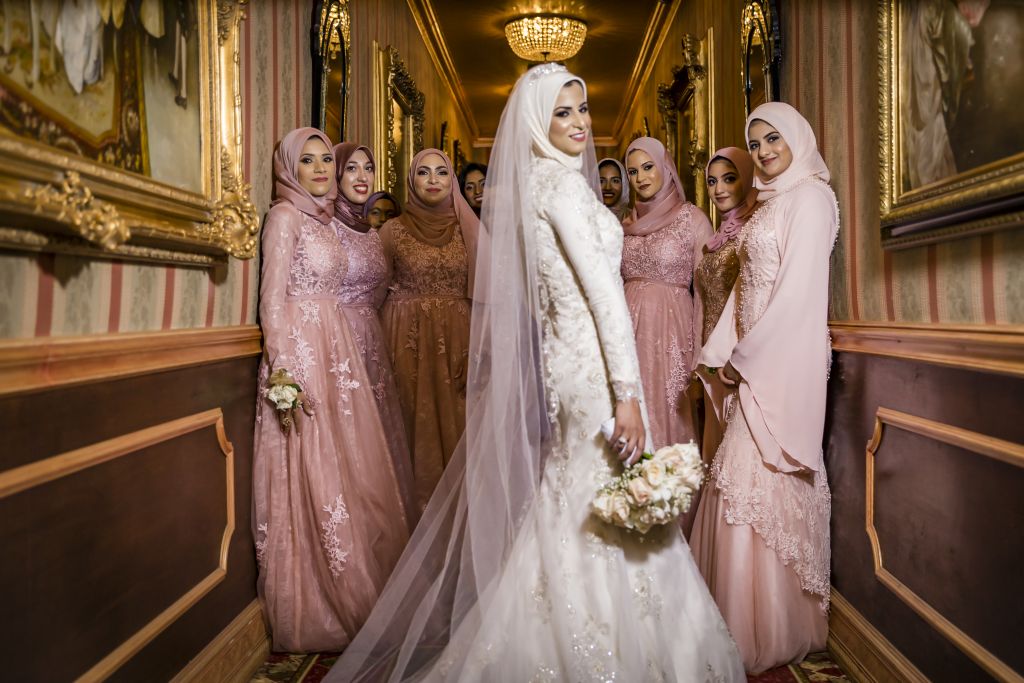 We have shot Muslim wedding from New York City to Tampa. We are experience with both the Henna Party as well as the Wedding Celebration. A Palestinian Henna Party is typically the beginning of a 3 day wedding Celebration. The male members of the family perform a Dabke, a Palestinian Folklore Line Dance. Halfway through the party Kenfa Nebulsia’ is served, a delicious traditional sweet stuffed Pastry with a certain type of cheese.
We have shot Muslim wedding from New York City to Tampa. We are experience with both the Henna Party as well as the Wedding Celebration. A Palestinian Henna Party is typically the beginning of a 3 day wedding Celebration. The male members of the family perform a Dabke, a Palestinian Folklore Line Dance. Halfway through the party Kenfa Nebulsia’ is served, a delicious traditional sweet stuffed Pastry with a certain type of cheese.
 A Palestinian Henna Party is typically the beginning of a 3 day wedding Celebration. The male members of the family perform a Dabke, a Palestinian Folklore Line Dance. Halfway through the party Kenfa Nebulsia’ is served, a delicious traditional sweet stuffed Pastry with a certain type of cheese.
A Palestinian Henna Party is typically the beginning of a 3 day wedding Celebration. The male members of the family perform a Dabke, a Palestinian Folklore Line Dance. Halfway through the party Kenfa Nebulsia’ is served, a delicious traditional sweet stuffed Pastry with a certain type of cheese.
 Palestinian Wedding Night, which is the final and biggest celebration of the 3 day ceremony, starts of the groom goes to the brides house, and takes her to the hotel with a grand entrance and Puts the ring on her. After Dancing and Food, & Cake Cutting, the bride enters with big candles and dances with them, until Groom blows them out to the cheer of the guests.
Palestinian Wedding Night, which is the final and biggest celebration of the 3 day ceremony, starts of the groom goes to the brides house, and takes her to the hotel with a grand entrance and Puts the ring on her. After Dancing and Food, & Cake Cutting, the bride enters with big candles and dances with them, until Groom blows them out to the cheer of the guests.
Ethiopian Weddings
On our Ethnic Weddings tour, the culture that is probably the most fun to film are Ethiopian Weddings, certainly the craziest, see the video below. An Ethiopian Wedding is not for the Timid Videographer as part of Ethiopian Tradtion is the groom and groomsmen go to brides residence and have to force their way through the brides family. Our Ethnic Wedding Videographers in Tampa know how to be able to get right in the middle of everything and be somewhat athletic, to be in the chaos, yet to at times rush ahead so that you get the bride and her family’s reaction as the groom and groomsmen come rushing through. You can see the craziness in this video. The Grand Plaza in St Pete Beach is probably the perfect venue for a Ethiopian Wedding, as Palm Trees line both beach ceremony sites.

